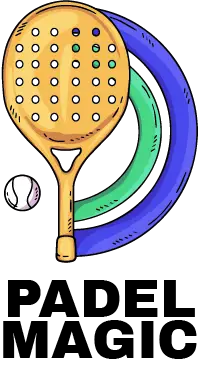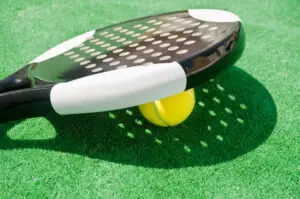When I first picked up a Padel racket, I was clueless about the profound impact grip techniques could have on my game.
My journey from a novice to a more seasoned player involved experimenting with various grips, but the “continental grip” truly piqued my interest.
This particular grip, often overshadowed by more conventional styles, opened up a new dimension in my gameplay, offering a blend of control and versatility I hadn’t experienced before.
In this article, I’ll share the insights and revelations from my odyssey with Padel Grips, focusing on how the continental grip altered my approach to the game.
Importance of choosing the right padel grip size
Choosing the right padel grip size is crucial for my game. The correct fit enhances power transfer, boosting shot strength and sharpening my play. It also combats fatigue in lengthy matches, ensuring sustained control and reducing post-game discomfort. This boosts my confidence and elevates my performance.
Finding the Perfect Padel Racket Grip: My Journey to the Continental
In my quest to master padel, I quickly learned the importance of the right grip. My go-to, the continental grip, became my foundation for almost every shot, from backhands and forehands to volleys. I discovered this essential grip by naturally sliding my hand down from the racket’s heart to the grip’s end.
But the continental grip wasn’t my sole companion on the court. I dabbled with an extreme grip, especially when I found myself at the back of the court, adding a strategic twist to my play.
The secret to finding these grips? My left hand. It might sound odd, but using my left hand to adjust the grip added precision and finesse to my shots. Between rallies, it was my left hand that guided my right, ensuring my grip was just right, gentle yet firm, ready for the next play.
Navigating the Grip Pitfalls: Lessons from the Court
On my padel journey, I realized the grip is foundational, not just a minor detail. I encountered several pitfalls, particularly with the continental grip. I learned the importance of optimal grip pressure, akin to holding a bird firmly yet gently, and the necessity of a neutral wrist position for stability and power.
Transitioning between grips initially felt awkward, but with practice, it became instinctive. I also discovered the importance of personalizing the grip to fit my style, rather than strictly copying others, and the value of simplicity over overcomplication. These lessons significantly improved my padel technique and game.
Finding My Grip: The Continental Grip Journey
My journey to the perfect padel grip led me to the continental grip, fundamentally changing how I played. At first, it felt awkward and unfamiliar, but as I practiced, its benefits became clear. It allowed for greater control and versatility, improving my defensive shots and serve returns. Embracing this grip was challenging, but it ultimately enriched my gameplay, proving to be a significant turning point in my padel experience.
Fine-Tuning Your Grip: Tips and Drills for Mastery
Embracing the continental grip was a pivotal moment in my padel journey, transforming not just my shots but my entire approach to the game. Here, I’ll share some personal tips and exercises that helped me integrate this grip into my play, enhancing both comfort and effectiveness.
Start with the Basics
Before diving into complex drills, ensure your foundational understanding of the continental grip is solid. Practice simply holding the racket, focusing on the placement of your base knuckle on the second bevel. This might seem elementary, but getting comfortable with the grip’s feel is crucial.
Gradual Transition
If the continental grip feels alien, don’t rush the transition. Start by using it during warm-ups or less competitive play. This gradual approach allows your muscle memory to adjust without the pressure of a high-stakes game.
Wall Rallies
One of the simplest yet most effective drills is to hit against a wall. Concentrate on using the continental grip for forehand and backhand shots. The wall offers immediate feedback and endless opportunities to repeat strokes, helping reinforce the grip with every hit.
Serve and Volley Drill
The continental grip shines in serve and volley scenarios due to its versatility. Practice serving with this grip followed by a quick transition to a net approach and volley. This drill not only improves your grip comfort but also enhances your overall game strategy.
Grip Strength Exercises
A strong grip is essential for effectively utilizing the continental grip. Incorporate exercises like squeezing a tennis ball, wrist curls, and reverse wrist curls into your routine. Strengthening your grip ensures better racket control and reduces the risk of injury.
Reflect and Adjust
After each session, take a moment to reflect on your comfort and performance with the continental grip. Consider any discomfort or difficulty you encountered and adjust your grip slightly if needed. Remember, the goal is effective integration, not rigid adherence to a one-size-fits-all approach.
By incorporating these tips and exercises into your practice, the continental grip can become a natural extension of your playing style, offering both versatility and precision on the padel court.
Factors that determine the appropriate padel grip size
Selecting the right padel grip size is vital for enhancing your gameplay and comfort on the court. Here’s a detailed breakdown of the factors you should consider to determine the most suitable padel grip size for you:
Hand Size Measurement:
Method: Extend your playing hand and measure from the tip of your ring finger down to the middle crease of your palm. This measurement in inches can guide you towards the appropriate grip size.
Fit Test: Hold the racket with your normal grip. There should be a finger’s width space between the tips of your fingers and the palm of your hand for the ideal grip size.
Playing Style Considerations:
Control-Oriented Players: If precision and control are your priorities, you might prefer a slightly smaller grip to enhance maneuverability and feel.
Power Players: For players focusing on power, a slightly larger grip can provide additional stability and leverage.
Comfort and Feel Preferences:
Pay attention to how the grip feels during play. It should not cause any discomfort or require excessive pressure to maintain a firm hold. Your grip should allow for slight adjustments without compromising on control.
Sweat Absorption Factors:
If you tend to sweat a lot, consider grips made from materials that offer better moisture absorption. Adding an overgrip can also improve the grip’s feel and sweat absorption, potentially necessitating a slightly larger base grip size.
Injury Prevention Insights:
A grip that’s too small might force you to over-grip, leading to strain. Ensure the grip size allows you to hold the racket comfortably without having to squeeze tightly, reducing the risk of conditions like tennis elbow.
Racket Control Dynamics:
The grip size should enhance your ability to feel and control the racket through various shots. Experiment with different sizes at a store if possible, performing a few swing motions to assess control and comfort.
Experimenting with different grip sizes, perhaps by trying out rackets from friends or at a local club, can provide valuable insights into what works best for you. Keep in mind that adding an overgrip can slightly increase the size and alter the feel, so factor this into your decision if you regularly use overgrips.
FAQ About Padel Position
Overgrip is not necessary for padel, but it can be useful for players who sweat a lot or for those who prefer a softer and more comfortable grip.
The grip is the original grip that comes with the padel racket, while the overgrip is an additional layer of grip that is placed on top of the grip to enhance comfort and absorb sweat.
Tennis and padel grips are similar but not exactly the same. Padel grips are typically shorter and wider than tennis grips to accommodate the shape of the padel racket handle.
The thickness of a padel grip is a matter of personal preference. However, most players prefer a grip that is between 1.5mm to 2.5mm in thickness.
While it is possible to use a tennis grip for padel, it is not recommended. Padel grips are specifically designed for the shape and size of the padel racket handle, while tennis grips are not.
The best grip size for padel depends on factors such as hand size, playing style, and personal preference. It is recommended to try different grip sizes to find the one that feels most comfortable and secure.
Thicker grips are not necessarily better for padel. It all depends on the player’s personal preference and what feels most comfortable and secure in their hand.
To choose a grip for padel, consider factors such as hand size, playing style, and personal preference. It is recommended to test different grip sizes and materials to find the one that works best for you.
Most pros use a grip that is between 1.5mm to 2.5mm in thickness and made of high-quality materials that offer good traction and comfort.
The most popular grip style in padel is the traditional grip, which involves placing the index finger of the non-dominant hand on the edge of the racket face and the remaining fingers on the handle.
A neutral grip is generally considered better for padel as it allows for greater flexibility and maneuverability in the wrist and forearm. A strong grip can limit the player’s ability to make quick adjustments and react to fast shots.
The best grip for smashing in padel is the continental grip, where the base knuckle of the index finger is placed on the top bevel of the racket handle. This grip allows for greater control and power when executing smashes.
To sum up
Choosing the right padel racquet grip size is essential for optimal results on the court. Taking accurate measurements and considering factors such as hand size, playing style, and skill level can help you find the perfect fit. With a little time and effort, you can ensure that your padel experience is comfortable, enjoyable, and successful!







